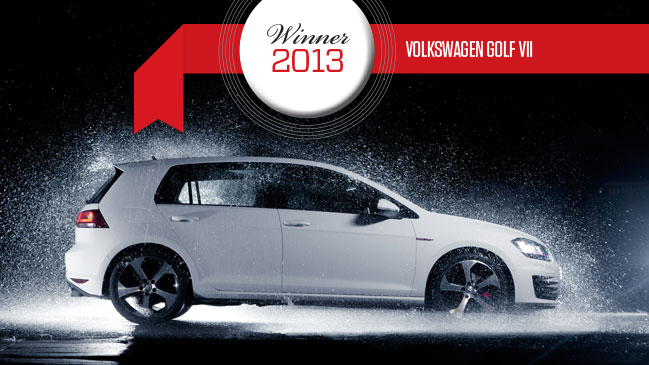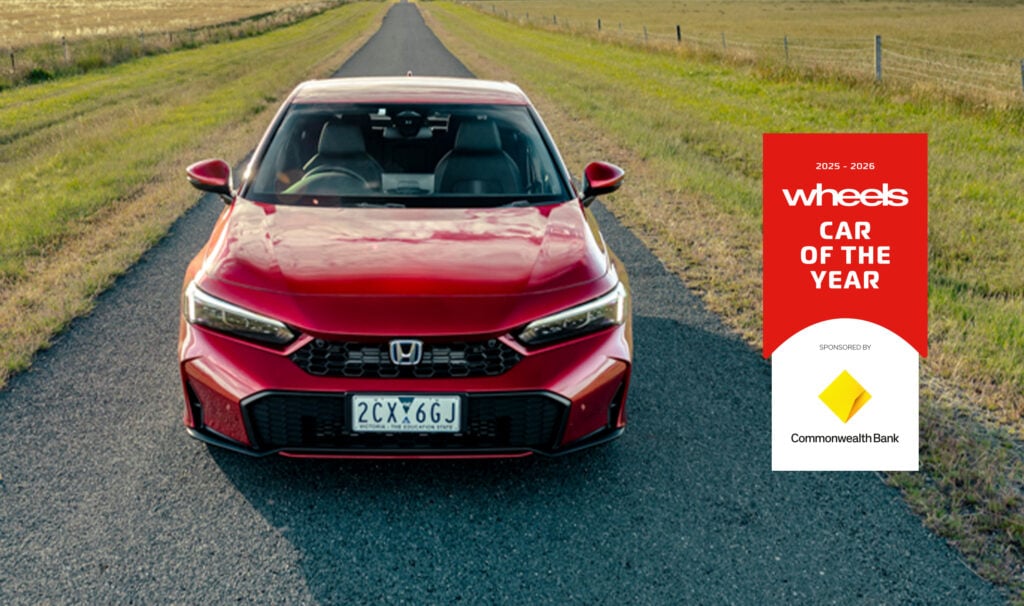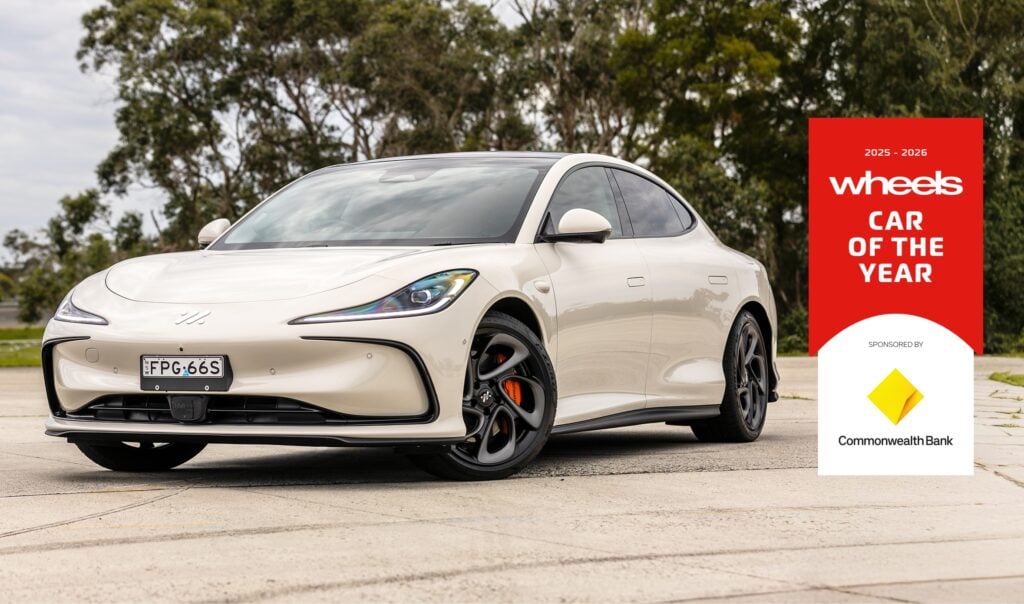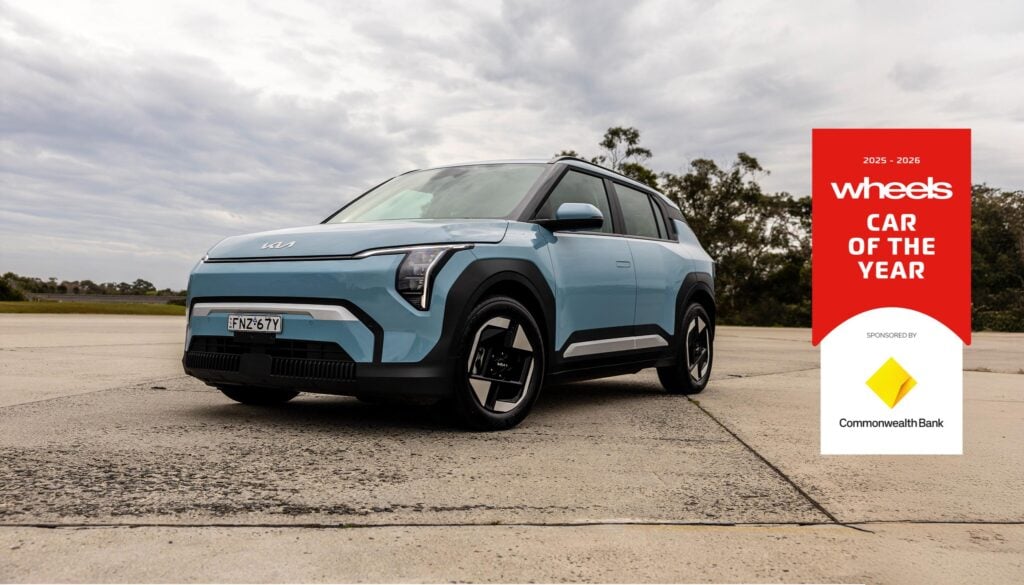Here is a car for all reasons. The Golf VII is satisfying to drive, serene to ride in and superbly user-friendly. It’s also remarkably fuel efficient, inarguably safe, technically advanced and, especially in its least expensive form, stunning value. Volkswagen seems almost to have set out to create a car to excel in every one of the five Wheels Car of the Year criteria.
Criticisms? The seventh generation of Volkswagen’s hatchback doesn’t exactly evoke excitement at first sight. The Golf VII’s exterior is an ultra-cautious evolution of the familiar forms and details of its predecessors.
Its interior is so super-conservative that it verges on plainness. But, from Volkswagen’s perspective, all that was required with the latest in its long-running line was for it to look unmistakably like a Golf. That’s exactly what the company’s designers delivered.
But Germany’s biggest car maker obviously asked its engineers for everything they had when it came to innovation and advancement. Volkswagen isn’t short of technical talent or manufacturing expertise. This much was clear even before the 2012 European launch of the Golf VII. Now it’s on the market, it is abundantly obvious how far ahead of the competition it is. The world’s other mass-market manufacturers must surely be awed, and probably frustrated, by what Volkswagen has achieved.
The wonder-workers of Wolfsburg have created a Golf that’s better in every way that can be measured. And the increments are anything but minuscule. Volkswagen has cut Golf’s weight up to 100kg.
This despite growing in wheelbase, length, width and roominess compared to its immediate predecessor. The VII is built on the company’s new MQB architecture. Those initials stand for the German Modularer Querbaukasten, which translates as ‘Modular Transverse Toolkit’ or ‘Modular Transverse Matrix’.
MQB is ultimately destined to provide the basis for up to 40 different VW Group models, but the architecture was designed primarily to accommodate the requirements of the Golf VII, according to head of project management Albert Meltzow.
Consequently, there’s extensive use of lightweight steel throughout the new Golf’s body structure and the kind of painstaking design that doesn’t put a gram of material anywhere it doesn’t serve some useful purpose. More than 20kg was shaved from the body’s weight this way. Similarly rigorous mass-reduction measures also extended to the Volkswagen’s seats, instrument panel, air-conditioning, and electrical system.
But it was a switch from cast iron to aluminium for the cylinder blocks of the Golf VII’s turbocharged petrol engines that delivered the single biggest weight saving – up to 40kg. The only thing the new EA211 spark-ignition fours have in common with the EA111 units they replace is an 82mm cylinder bore-centre spacing.
The new cylinder heads point their exhaust manifolds rearwards, and are inclined backwards 12 degrees in the engine compartment, so mimicking the Golf’s EA288 turbo-diesel fours. This reduction in installation variation simplifies assembly, undoubtedly saves cost, and surely contributes a little something to the new Golf’s competitive pricing.
Volkswagen’s aerodynamicists claim to have cut the Golf VII’s drag by 10 percent. Although 14mm wider, it’s 28mm lower, so frontal area is reduced. And the new shape is more slippery, too.
Lower weight and improved aerodynamics, plus other improvements like a less energy-hungry air-conditioning system, should add up to excellent fuel consumption. In the case of the Volkswagen, they do. The line-up of models assembled for COTY testing did exactly what those judges who had comparison tested Golf VIIs during 2013 expected – they delivered stunningly low consumption numbers, despite being driven with a merciless disregard for economy. From the base 90TSI engine, through the 103TSI and 110TDI, and on to the go-hard GTI, whether with manual or dual-clutch transmissions, the Golf VII delivers outstanding fuel efficiency.
At the pumps isn’t the only place owners will save. Responding to criticism of high and inconsistent maintenance costs, Volkswagen Australia introduced capped-price servicing just days after the local launch of the mainstream Golf VII models last April. The deal is good for the first six years or 90,000km of ownership, whichever comes first. Servicing costs for petrol-powered models, except the GTI, are capped at $2112. The turbo-diesel will cost a little more, $2371, to maintain for the same period.
The car itself is priced more sharply than ever. The entry point to the Golf VII line-up in Australia is the 90TSI with a 90kW 1.4-litre turbo engine and six-speed manual. At $21,490, it’s $500 cheaper than the equivalent Golf VI, which had a less powerful 77kW 1.2-litre turbo four.
The new Volkswagen remains competitive through the Comfortline grade, which, like the base model, offers the 90kW engine with manual or seven-speed DSG transmissions, and the Highline grade, with either the 103kW version of the turbo 1.4-litre and a seven-speed DSG or a 110kW 2.0-litre turbo-diesel with six-speed DSG.
Topping the Golf VII line up is the simply brilliant GTI, launched here in October at $41,490 with a six-speed manual and $43,990 with six-speed DSG. This is a hot hatch that winningly combines genuine maturity with youthful exuberance. It’s perhaps the most polished and well-rounded example of the genre ever made. The GTI’s 162kW 2.0-litre turbo four, third-generation of the EA888 series, simply bursts with elastic, exploitable energy.
It was impossible not to be impressed by its easy speed, and pair of excellent transmissions. With more direct steering than other Golf VIIs, a lower stance, wider tyres, better brakes, a specially tuned electronic differential lock and standard adaptive damping – with a useful range of four settings: ‘Sport’, ‘Normal’, ‘Comfort’ and ‘Individual’ – the GTI also delivers a rewarding and involving driving experience. Especially at Holden’s Lang Lang Proving Ground, where its limits could be fully explored, it sent judges into a superlative-hunting frenzy.
For different reasons, so did the least- expensive Golf VII of all, the 90TSI. This affordable hatchback is agile, eager, spacious, comfortable, fabulously refined and beautifully built. It’s the model where the scale of Volkswagen’s achievement is most obvious. Has anyone ever produced a car of such shining quality for such an excellent price before? That’s the question we kept asking…
As the judges worked their way through Comfortline and Highline, 103TSI and 110TDI, manuals and DSGs, and the pair of GTIs, attempting to find serious fault with the Golf VII began to become an obsession. This quest grew more intense as the days passed, and the test program moved from proving ground to public road. The judges’ notebooks record of growing frustration, especially regarding the 90TSI.
Corby: “How can a base model be this good?” Peter Robinson: “Base Golf more refined than A-Class for road noise and ride.” Sally Dominguez: “Pretty hard to fault.” Glenn Butler: “Sometimes it’s the little flaws that give something character… the Golf has none.” Byron Mathioudakis: “So utterly and toweringly capable it makes me sick!”
Safety was never going to provide a reason for criticism. The dry-as-dust data-crunchers at ANCAP, announcing the seven-airbag Volkswagen’s five-star rating, were even moved to note the car introduces a number of new safety assist technologies. Having duly noted this, the COTY judges tried to find some weakness in the car’s active safety systems. In vain. The Volkswagen’s ABS is more effective in the wet than on dirt, and the ESC could be a little more subtle, but that’s it.
The behaviour of the Golf’s DSG was thoroughly checked, too. On the handy brake-test hill at Lang Lang, theVolkswagen’s dual-clutch automatic performed perfectly.
The hill-hold function gives the driver a couple of stationary seconds after brake release to get their foot onto the throttle, which is ample. At steep angles, the Golf also seems to de-activate its start/stop system, a smart measure to prevent the possibility of stalling and subsequent rollback. Nor was there any DSG hiccup during repeated parallel parks on public streets.
Vision out of the Golf VII is better than average and its driving position is practically perfect, too. Sustained scrutiny of the interior revealed nothing but considerable care taken in both design and assembly. And the consistent simplicity that’s the defining feature of the car’s design, inside and out, eventually won some of those judges who’d thought it painfully plain at first.
Riding in the rear, the Golf VII’s higher tyre noise levels on coarse-chip surfaces were more obvious than up front. It’s not bad enough to be a deal-breaker, and the rear seat itself is excellent. There’s ample headroom, and the perfectly angled backrest and cushion are much more than averagely supportive. Further aft, the clever false floor of the larger-than-ever 380-litre cargo area, and the considerate provision of stowage for the compartment’s cover, were admired.
Many cars make perfect sense to buy, yet deliver imperfect pleasure once bought. The Golf VII is not one of them. From the smallest, thoughtful details to the biggest basics, this is a car that never falters. Its breadth of talent, its almost annoyingly persistent perfectionism and its unrelenting satisfaction make it something truly rare… a car for all reasons.
This is one of the most worthy Wheels Car of the Year winners ever.






